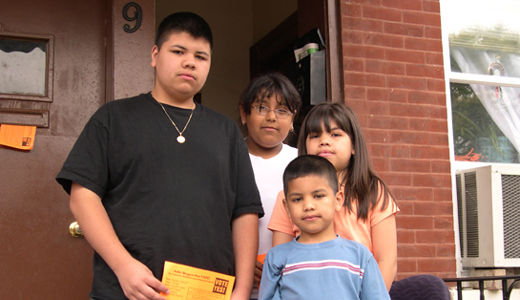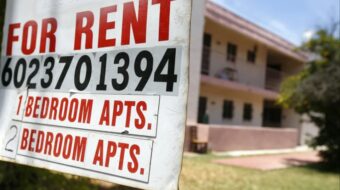
OAKLAND, Calif. — California’s Latino and African American homeowners experience twice the rate of foreclosures than that of non-Hispanic whites, a recent report found.
As the nation’s foreclosure crisis worsens, efforts are underway by the Obama administration and in California to ease the situation.
Among the key findings reached by the Center for Responsible Lending are:
· Between 2004 and 2008, Latinos in California accounted for nearly half, 48 percent, of all foreclosures despite having received only 29.9 percent of all loans. Similarly, African Americans experienced 7.6 percent foreclosures on 5.7 percent of loans.
· Foreclosure rates have been higher — 2.3 percent for Latinos and 1.9 for African Americans — than that of their white counterparts in a state that ranks near the top when it comes to mortgages seriously in arrears (defined as 90 days or more delinquent or in foreclosure) just behind Florida, Nevada and Arizona.
Reaction to the report — a first-of-its-kind study released to the public in August — was swift.
Center for Responsible Lending “has sounded the alarm for the last two years about the devastating impact foreclosures have had on communities of color, but this report reveals a shocking level of concentration among Latino homeowners in California,” said Janet Murguía, president and CEO of the National Council of La Raza.
“Dishonest brokers peddled their high-cost loans, steered our families into risky products designed to fail and now Latinos and all of California are paying the price,” she said.
The report further reveals the potential for an increase in foreclosures in the near future.
Between 2000 and 2007 California accounted for more than 30 percent of the nation’s Alt-A loans, considered riskier than A-paper, or “prime,” and less risky than “subprime.”
While these loans have already experienced a sharp rise in defaultssharp rise in defaults, once the low introductory payments begin to expire after 2012 and new higher payments kick in, “the resulting payment shocks threaten to worsen the crisis,” the report warns.
“All Californians are severely impacted by the foreclosure crisis,” declared Paul Leonard, director of CRL’s California office. “We need solutions now that ease the pain everywhere.”
Recognizing that the housing crisis continues unabated, both California’s CRL and the Obama administration are taking steps to allay the situation.
After home sales nationally dropped in July, the Obama administration announced in late August that it would soon set up a Federal Housing Authority refinancing effort to help borrowers struggling to pay their mortgages.
Housing and Urban Development Secretary Shaun Donovan said the federal agency will also start an emergency homeowner’s loan program for unemployed borrowers so they can remain in their homes.
Meanwhile, the CRL study also outlines a series of policy recommendations aimed to alleviate the foreclosure epidemic. They include:
• Requiring banks to finish reviewing loan modification applications before initiating foreclosure procedures. This is the main feature of a bill that recently passed the state Senate but died in the state Assembly.
• Reducing the principal amount due by the borrower, not just the interest on the loan, especially in cases where borrowers are seeking relief from sub-prime loans.
• Changing the law to allow bankruptcy judges to consider loan modification of the borrower’s principal residence.
• Expanding funding of housing counseling agencies and legal aid providers.
The CRL study also reveals that, contrary to right-wing lore, more than half (50.3 percent) of foreclosures resulted from refinance loans, not from people buying properties they could not afford.
Often working-class borrowers refinanced their homes, cashing out a set amount in order to supplement personal and family income inadequate to meet health care costs and other necessities of life.
More than three-quarters of the state’s foreclosures were on modest properties, not on sprawling “McMansions” as some would have it.
Contributing to an increase in mortgage defaults is the state’s high unemployment rate, among the worst in the nation at 12.3 percent, which triggers a vicious cycle, the study showed.
Unemployed workers unable to meet their mortgage payments further drag down the economy, resulting in higher unemployment, which in turn translates into an increase in mortgage defaults.
While beyond the study’s purpose, the report’s findings suggest that part of the solution to the foreclosure epidemic is the massive creation of (good paying) jobs, in addition to mortgage lending reform.
Photo: Another study said Latino kids suffer most from home foreclosures. (Pepe Lozano/PW)











Comments